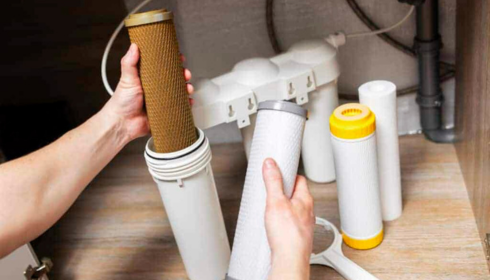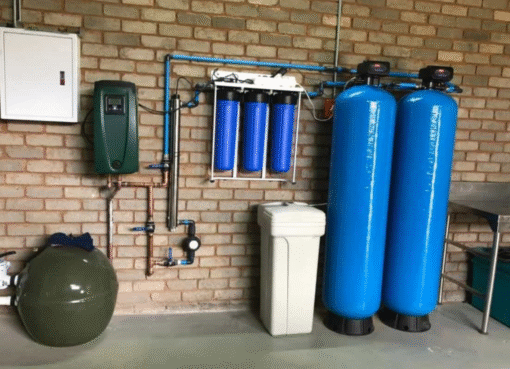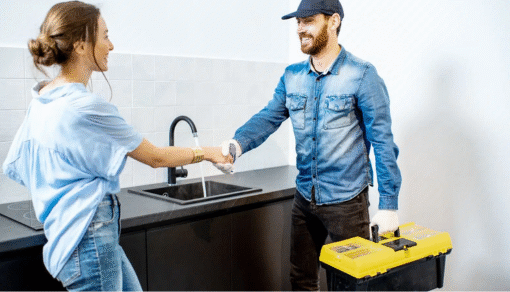Why a Sediment Filter Can Save Your Home’s Water System More Than You Think

There’s something oddly comforting about turning on the tap and knowing clean water will flow. You don’t think twice about it, right? That is, until the water runs cloudy, your faucets get clogged, or your showerhead sprays more sideways than straight. That’s when the sneaky culprit—sediment—makes its presence known.
Sediment sounds harmless, almost like dust settling at the bottom of a glass. But in reality, it’s the silent disruptor in many homes, bringing minerals, rust flakes, sand, and tiny debris straight into your plumbing system. Left unchecked, it can ruin appliances, clog pipes, and even mess with the taste and safety of your drinking water. The solution, thankfully, isn’t complicated: it’s proper filtration. And the earlier you handle it, the fewer headaches you’ll face down the road.
The Case for a Whole-Home Approach
If you’ve ever pulled out your washing machine’s filter or peeked into a clogged faucet aerator, you already know sediment builds up faster than you expect. Now, multiply that by every faucet, every pipe, and every appliance in your home. It’s a recipe for ongoing frustration.
That’s why many homeowners are turning to whole house sediment filter installation as a long-term fix. Instead of targeting just one tap or relying on a small under-sink system, a whole-house filter intercepts particles right at the entry point—before the water touches anything inside your home. Think of it as setting up a guard at the gate, stopping trouble before it has a chance to spread.
What Sediment Really Does to Your Home
At first, sediment is annoying—spots on your dishes, cloudy ice cubes, sluggish showers. But the bigger issues sneak up over time:
- Clogged plumbing lines. Those harmless-looking particles slowly narrow pipe openings, like cholesterol in arteries.
- Shorter appliance lifespan. Dishwashers, water heaters, even coffee makers choke when sediment gets inside. Repair bills stack up faster than you think.
- Extra maintenance. Constantly cleaning faucets or showerheads isn’t just tedious—it’s a warning sign your water system is under stress.
- Strange water taste or smell. Minerals, rust, and organic debris all add their own “flavor,” which no one wants in a glass of water.
Once you see the pattern, it’s obvious: sediment control isn’t optional. It’s preventive care for your home’s water system.
Replacement: The Step Most People Forget
Installing a filter isn’t the end of the story. Filters have a lifespan, and ignoring that fact is like never changing the oil in your car. Over time, a saturated filter stops working properly, and in some cases, it can even make the problem worse.
This is where a professional sediment filter replacement service matters. Technicians not only swap out old cartridges but also inspect the system, making sure it’s still catching what it should. They’ll check pressure levels, seals, and flow rates—little details most homeowners don’t think about but that make a big difference in how well your filter does its job.
Well Water: Where Sediment Hits the Hardest
If your home runs on municipal water, you already get some level of treatment before it enters your pipes. But with well water, you’re dealing with raw, untreated water straight from the ground. That means extra minerals, sand, and sometimes even organic debris like leaves or soil runoff.
Homeowners with wells know this all too well—the orange stains from iron, the cloudy glass of water, the sediment settling at the bottom of a pitcher. For them, having access to a remove sediment from well water service is more than just convenience. It’s the line between drinkable water and constant frustration.
These services go beyond filter installation. They often involve testing the water to pinpoint the exact contaminants, setting up specialized filters (sometimes multi-stage systems), and tailoring solutions to the unique conditions of a particular well. It’s customized care, and when it comes to something as essential as water, that matters.
The Money-Saving Side of Sediment Control
Let’s get practical—nobody likes extra expenses. But consider this: sediment doesn’t just clog pipes, it drives up costs. A water heater coated in sediment works harder, using more energy. A dishwasher that keeps breaking down drains your wallet. Replacing appliances years before their time? That’s money down the drain, literally.
By handling sediment proactively, you’re not just making your water cleaner—you’re protecting your investments. A $200 filter system can save you thousands in plumbing repairs and appliance replacements over the years. It’s one of those rare home upgrades that pays for itself quietly in the background.
DIY or Professional Help?
You might be wondering if you can tackle sediment problems on your own. For small under-sink filters or pitcher-style filters, sure, it’s manageable. But when it comes to whole-house systems, especially for well water, things get trickier.
Incorrect installation can lead to leaks, poor water pressure, or filters that simply don’t do their job. Professionals bring two things DIYers often overlook: the right tools and the right experience. They’ll size the system correctly, place it where it belongs, and ensure the water flow isn’t disrupted. And since water is one of those essentials you can’t live without, it’s worth getting it right the first time.
Everyday Benefits You’ll Notice
People often think of water filtration as something that only matters behind the scenes, but the benefits show up in everyday life:
- Laundry comes out brighter without sediment dulling the fabric.
- Showers feel more refreshing without gritty buildup.
- Dishes and glasses actually sparkle.
- Appliances run smoother, quieter, and longer.
- And maybe most importantly, drinking water tastes clean and fresh.
It’s one of those changes that, once you experience it, you can’t imagine living without.
Closing Thoughts: Protect the Flow
Water connects nearly everything in your home. It runs through your pipes, into your appliances, onto your skin, and into your body. When sediment sneaks in, it disrupts that flow in ways you might not notice immediately, but you’ll certainly feel over time.
The good news? It’s preventable. With the right system in place, regular replacements, and professional care when needed, your home can stay free of the hidden costs and frustrations that sediment brings. Think of it not as another chore on your homeowner list, but as an investment in comfort, health, and peace of mind.
So, the next time you pour a glass of water, look at it closely. If it’s clear, crisp, and fresh, you’ll know it’s not by accident—it’s because you took action before sediment had the chance to take over.
Leave a Reply
You must be logged in to post a comment.




Leave a Comment